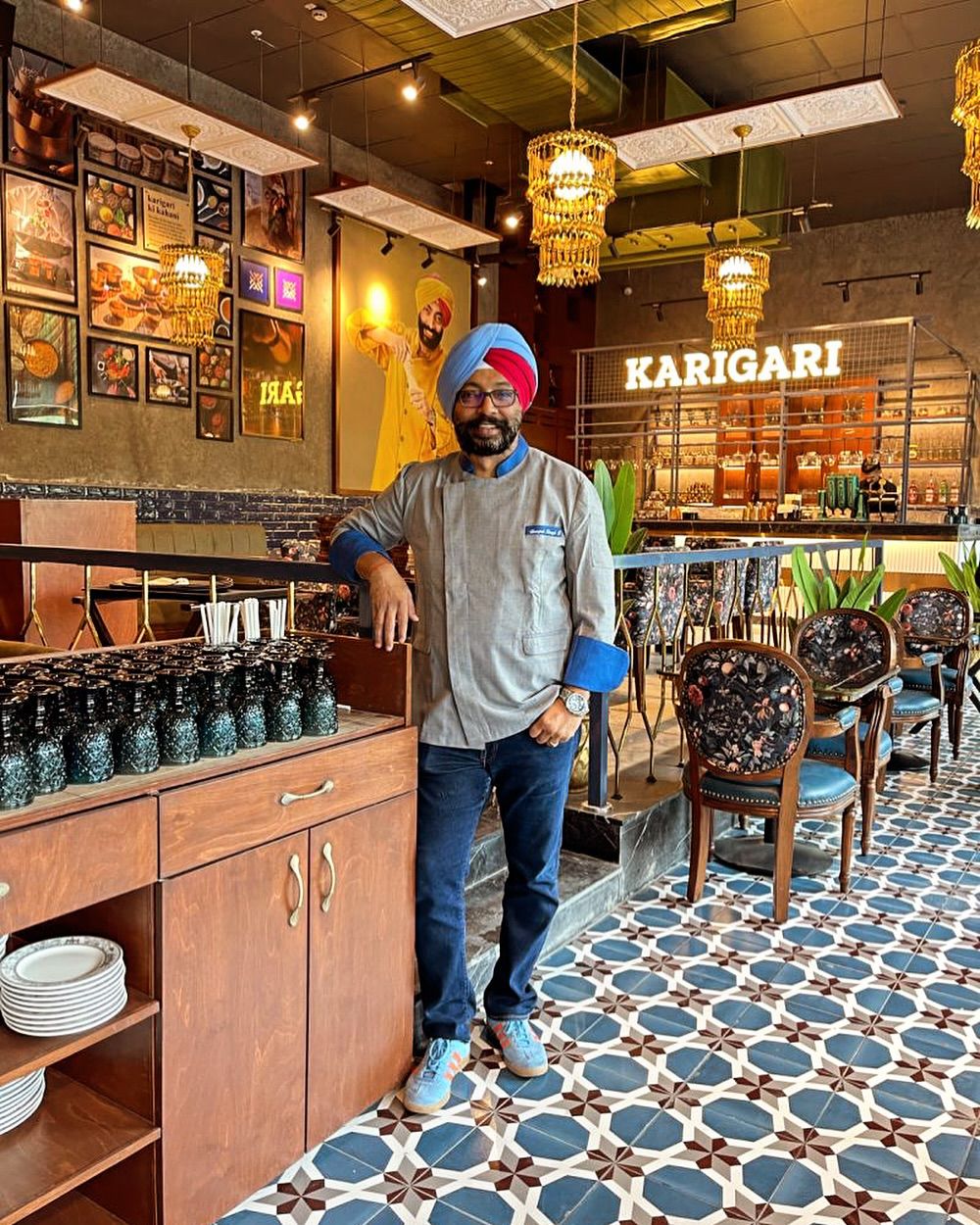Chef Harpal Singh Sokhi has opened his new restaurant in Delhi, which is called Karigari. He says the restaurant honours food craftsmanship, and he envisioned it to share a story. He wanted not just the food but also the interior to connect with the people, and it finally came to life.
It was during the first wave of COVID, that he started interacting with a group of people from Delhi who were working on a new concept and planning to open a chef-driven restaurant. However, when the pandemic hit, the discussions slowed down, and they feared the hospitality industry was doomed. But his investors were still keen on exploring the opportunity and building a brand.
“They were scouting for a location, and between the first and second waves of COVID, I traveled to Delhi. We secured a place and finalized the concept, exchanging ideas back and forth. I shared my vision of creating a restaurant that honors craftsmanship and storytelling, where every dish has a story. This idea became the backbone of our restaurant. We defined every aspect of the restaurant around this vision: it should feel emotional, connect with people, honor craftsmanship, and make people fall in love with the art of food,” he said.
“We worked with our interior designer to include elements that would evoke a sense of awe and uniqueness. As we wrote down and refined our ideas, we realized we were ready to build the restaurant. We named it Kaarigiri, which means craftsmanship, to honor food craftsmen from both our country and around the world,” he added.
It was also during COVID that Chef Harpal thought of building a new concept for a restaurant. He knew from the beginning that it would not be a multi-cuisine restaurant, and focused on Indian food, potentially pan-Indian, with a unique differentiator: storytelling for each dish.
“Each dish was carefully chosen, and the menu was crafted to include food from various sources: my mother’s kitchen, my wife’s kitchen, my father’s cooking, my mother-in-law’s kitchen, and legacy restaurants with special dishes. Additionally, the menu features dishes from my shows, Turban Tadka and Desh Da Swaad, as well as contributions from vendors I met along my journey,” he said.
“We combined all these elements to create a diverse and compelling menu. Each dish has a story, a quirky name, and an interesting background. When you dine at my restaurant, I encourage you to spend time reading the menu. This is where the differentiation begins, as the menu is the first selling tool you encounter. From there, you can take in the interiors and other unique aspects of the restaurant,” he added.
When it comes to the menu, Chef Harpal and his team were particular about fitting popular tastes. He said, “While our dishes might have quirky names, they ultimately suit Indian palates. We offer items like Kulche Chole Pockets, Pav Bhaji, Mirchi Ka Halwa, Swad Raat Wali Kheer, and a unique White Butter Chicken. One standout dish is Duhra Gucci Mushroom, which uses three types of mushrooms and two different flavors and gravies.”
He added that many dishes are inspired by various regions and legacy places, for example, they have Deenanath Maharaj Ki Tamatar Wali Chaat, inspired by a famous chaat vendor in Banaras, their beverages feature rose extracts from a person in Bikaner, and many of their breads come from his mother’s kitchen, adding a personal touch.
“The menu is well thought out, with flavors and textures that suit the ambiance. I was clear from the beginning that we didn’t just want to open restaurants in Delhi; we aimed to expand to Tier 2 and Tier 3 cities as well. While we might tone down the interior design in these cities, our focus remains on being relevant to local tastes. This careful consideration of taste and flavor profiles is key to Kaarigiri’s expansion and success,” he concluded.

